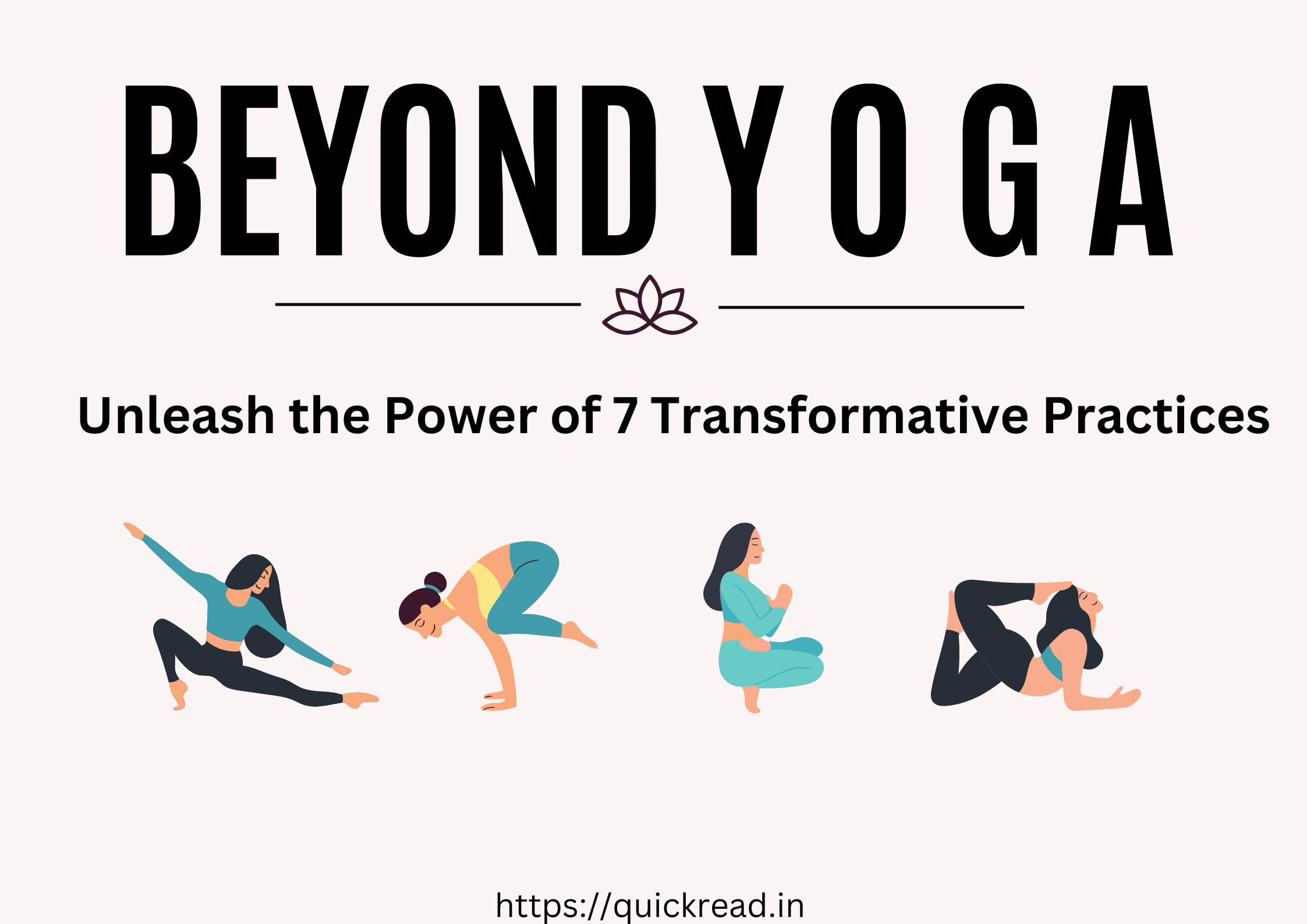Introduction
Beyond Yoga: Yoga is not just a physical exercise; it is a transformative practice that encompasses the mind, body, and spirit. In this article, we delve into the power of yoga and explore seven transformative practices that can help individuals unleash their full potential. By incorporating these practices into your life, you can experience profound changes and cultivate a deeper sense of well-being. So, let’s embark on this transformative journey together.
Understanding Yoga
Before we dive into the transformative practices, it’s important to understand the essence of yoga. Yoga has been practised for a very long time and has its roots in ancient India. It is a holistic discipline that combines physical postures (asanas), breath control (pranayama), meditation, and ethical principles.
Yoga is not limited to a particular religion or culture; it is a universal practice that can be embraced by people of all backgrounds. It provides a pathway to self-discovery, inner peace, and harmony with the world around us.
The Power of Practice
The transformative power of yoga lies in its regular practice. Consistency and dedication are key to experiencing the profound benefits that yoga offers. By establishing a regular practice, you create a space for self-reflection, self-care, and personal growth. The more you engage with yoga, the deeper your understanding and connection will become.
The 7 Transformative Practices
Now, let’s explore the seven transformative practices that form the core of this article. Each practice has its unique benefits and contributes to the overall transformation of mind, body, and spirit.
Practice 1: Asanas
Asanas are the physical postures in yoga. They help to strengthen and stretch the body, improve flexibility, and enhance overall physical well-being. Through regular practice of asanas, you can develop a strong and balanced body while cultivating mindfulness and focus.
Practice 2: Pranayama
Pranayama is the practice of breath control. It involves various breathing techniques that help regulate the breath and channelize the life force energy (prana) within the body. Pranayama techniques bring balance to the nervous system, increase vitality, and promote mental clarity.
Practice 3: Meditation
Meditation is the practice of training the mind to focus and redirect thoughts. It cultivates mindfulness, enhances self-awareness, and promotes relaxation. Through meditation, you can develop a calm and peaceful state of mind, reduce stress, and improve overall mental well-being.
Practice 4: Mantras
Mantras are sacred words or phrases repeated during meditation or chanting. They have a powerful vibrational effect on the body and mind. Chanting mantras can help purify the mind, awaken spiritual energy, and bring about a sense of deep connection and transcendence.
Practice 5: Mudras
Mudras are hand gestures that facilitate the flow of energy in the body. They are often used during meditation and pranayama practices to enhance the benefits of these practices. Mudras can help balance the elements within the body, promote healing, and stimulate specific energy pathways.
Practice 6: Bandhas
Bandhas are energy locks in the body that help redirect and retain vital energy. They involve specific muscle contractions that activate and regulate the flow of energy within the body. By practicing bandhas, you can enhance concentration, awaken dormant energy centers, and experience a heightened sense of awareness.
Practice 7: Kriyas
Kriyas are cleansing practices that purify the body and mind. They involve various techniques such as nasal cleansing (neti), digestive tract cleansing (dhauti), and internal cleansing (basti). Kriyas help remove toxins, rejuvenate the body, and promote overall well-being.
FAQs
1. What are the benefits of practicing yoga?
Yoga offers numerous benefits, including improved flexibility, strength, stress reduction, enhanced mental clarity, and a sense of inner peace.
2. Can everybody, regardless of age or fitness level, practise yoga?
Yes, people of various ages and fitness levels can practise yoga. It can be adapted to suit individual needs and limitations.
3. How often should I practice yoga to experience its transformative effects?
Consistency is key. Aim for regular practice, ideally a few times a week, to experience the transformative effects of yoga.
4. Do I require any particular tools to practise yoga?
Yoga can be practised without a lot of equipment. A yoga mat and comfortable clothing are sufficient to begin your journey.
5. Is yoga a religious practice?
While yoga has roots in ancient spiritual traditions, it is not limited to any religion. It is a practice that transcends religious boundaries and focuses on personal growth and well-being.
6. Can yoga help with stress management?
Yes, yoga is known for its stress-relieving benefits. It promotes relaxation, mindfulness, and helps reduce the impact of stress on the body and mind.
7. Do I need to take any safety measures before beginning a yoga practise?
If you have any underlying health conditions or injuries, it’s advisable to consult with a healthcare professional or a qualified yoga instructor before starting a yoga practice.
Conclusion
In conclusion, the power of yoga lies in its ability to transform and empower individuals. By embracing the seven transformative practices—Asanas, Pranayama, Meditation, Mantras, Mudras, Bandhas, and Kriyas—you can unlock your full potential and cultivate a deeper sense of well-being. Regular practice, consistency, and dedication are essential to experiencing the profound benefits that yoga offers. So, take the first step on this transformative journey and unleash the power of the seven transformative practices.


